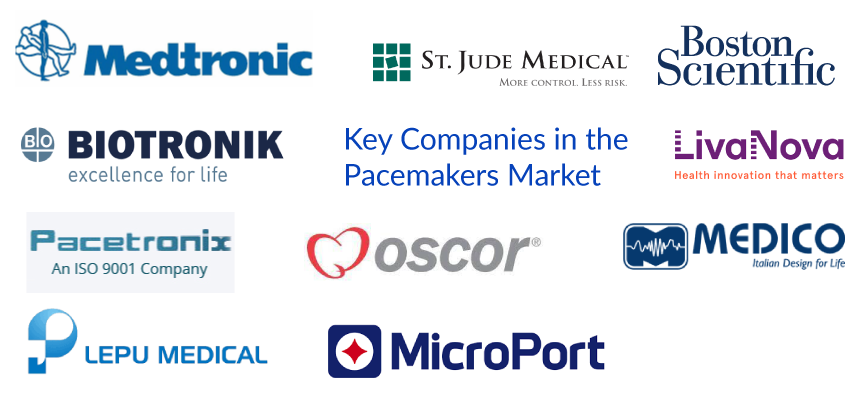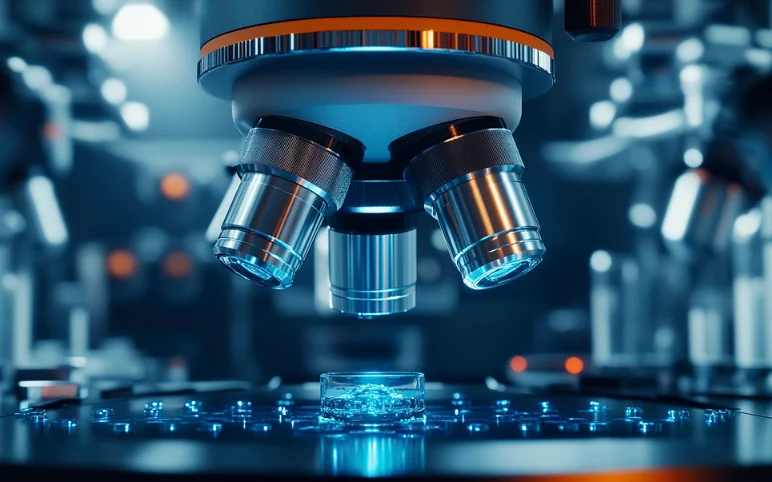Pacemakers: Analyzing the Market Dynamics and Major Developments
Feb 15, 2023
Table of Contents
Over the past few decades, the prevalence of cardiovascular diseases has grown significantly, leading to very high mortality and morbidity worldwide. CVDs are a group of disorders of the heart and blood vessels and include coronary heart disease, cerebrovascular disease, rheumatic heart disease, and other conditions. As per WHO, an estimated 17.9 million people lose their lives yearly due to CVDs. Moreover, Cardiovascular diseases account for 40.8 million disability-adjusted life years (DALYs) each year and 36.4 million years of life lost (YLLs) due to premature deaths. As per the Pan American Health Organization (PAHO), cardiovascular diseases cause more deaths each year than any other disease. Heart disease and stroke-related fatalities account for more than three-quarters of all deaths in low and middle-income nations. The burgeoning cases of cardiovascular diseases are stimulating the demand for new therapies and innovative products and devices.
In the case of CVDs such as bradycardia, an abnormally slow heartbeat, sick sinus syndrome, Tachy-Brady syndrome, hypertension, tachycardia, cardiac arrhythmias, or similar condition that affects the way the heart beats, a pacemaker is one of the most popular and sought after devices. A pacemaker is a small device consisting of three parts, namely, a pulse generator, one or more leads, and an electrode on each lead. It is placed in the chest or abdomen and can control abnormal heart rhythms. It uses electrical pulses to prompt the heart to beat normally. In recent years, the demand and the market for pacemakers have significantly increased due to the rising prevalence of cardiovascular diseases. Today, millions of people worldwide have implanted cardiac pacemakers and are living a comfortable and quality life.
Downloads
Click Here To Get the Article in PDF
Recent Articles
- Edwards’s Pascal Precision System; Abbott’s New Spinal Cord Stimulation Device; Imagin to A...
- GE HealthCare’s CARESCAPE Canvas Patient Monitoring Platform; Medtronic’s MiniMed™ 780G Sy...
- Ears to the Future: Evaluating Key Advancements and Trends Driving the Audiology Devices Market G...
- What are the Top Five Leading Causes of Deaths in the World?
- Cardio Flow’s FreedomFlow Orbital Atherectomy Peripheral Platform; Medtronic’s Aurora EV- ICD Sys...
Why are Pacemakers Important?
Pacemakers are small, battery-operated devices implantable through a minimally invasive procedure. Pacemakers send electrical pulses to help the heart beat at a normal rate and rhythm. These devices help to regulate the heartbeat in case it is too slow or if it is too fast. Some arrhythmia symptoms, including weariness and fainting, can be relieved with a pacemaker. Additionally, it can assist the person with irregular heartbeats in getting back to an active way of life. Moreover, they can be implemented temporarily (short-term) or permanently (long-term).
Pacemakers are important as they play a critical role in restoring normal heart rhythms, improving heart function, and reducing symptoms of heart-related conditions, such as shortness of breath, dizziness, and fatigue. They can also help to reduce the risk of heart-related complications, such as stroke and heart attack. Overall, they have a key role in improving the patient’s quality of life.
Pacemakers Types and Market Segment
Today, various types of pacemakers are available in the market to cater to the different needs of patients. Types and use of pacemakers may vary based on the patient’s disease or the condition to be treated. The pacemakers are segmented by implantability, such as an implantable pacemaker (which includes Single-Chamber Pacemaker and Dual-Chamber Pacemaker) and an External Pacemaker. Single-chamber pacemakers use a single wire attached to one chamber of the heart. Dual-chamber pacemakers use two wires attached to two chambers of the heart. Implantable Biventricular (CRT Pacemaker) is also available in the market and is used to treat heart failure. Biventricular pacemakers use three wires, two of which attach to the lower chambers (called ventricles) of the heart and a third connected to the right upper chamber (the right atrium). Moreover, as per the device type, they are segmented as MRI Compatible Pacemaker and Leadless MRI Compatible Pacemaker. Leadless pacemakers are the most common type and are attached to an inner wall of the heart without using any wires. The different types of pacemakers have their set of benefits and drawbacks.
The implantable pacemakers have the largest share in the market, owing to the higher preference for these pacemakers over their external counterparts. In the type of device segment, the biggest trendsetter in pacemaker technology in the last few years has been the introduction of US Food and Drug Administration (FDA)-cleared MRI compatible models, as these pacemakers minimize heating potential, dislodgement, current induction, and electromagnetic interference. These allow patients to undergo MR imaging exams without harm to the device or changes to the device settings. Pacemakers without MRI-conditional use technology usually prevented patients from being able to get an MRI.
Pacemakers Market Dynamics and Drivers
As per DelveInsight, the pacemaker market is anticipated to grow immensely in the coming years owing to the rise in the prevalence of cardiovascular diseases, which leads to a greater demand in the market for pacemakers. More than four out of five CVD deaths are due to heart attacks and strokes, and one-third of these deaths occur prematurely in people under 70 years of age. As per the assessment by Global Population Aging (United Nations, 2020), the aging population tends to grow at an alarming pace. In 2020, there were around 727 million individuals in the world aged 65 years or older. By 2050, the figure for such patients is expected to double and reach 1.5 billion by 2050. Thus, all these factors are projected to stimulate the demand and the growth of the pacemakers market.
Apart from rising cardiovascular diseases, the ongoing research and development activities around new and innovative product manufacturing also play a crucial role in driving the pacemakers market. Globally, several major MedTech companies are involved in developing advanced pacemakers. Similarly, new technological advancements like tracking device data through wireless remote monitoring systems; longer battery life, reduced battery power consumption technology; data recording functionality, and the introduction of leadless pacemaker systems are also expected to boost the Pacemaker’s market growth in the coming years.
Companies in the Pacemakers Market
Over the years, the demand for Pacemaker Surgery has grown immensely worldwide. Several major MedTech and HealthTech companies in the Pacemakers market to fulfill the demand and provide new products with better efficiency and effectiveness.

Some of the major companies actively operating in the market include Medtronic, Inc., St. Jude Medical, Inc., Boston Scientific Corporation, Biotronik SE & Co. KG, LivaNova PLC, Shree Pacetronix Ltd., OSCOR Inc., MEDICO S.p.A., Lepu Medical Technology Co. Ltd., MicroPort Scientific Corporation and others. Due to high demand, several major MedTech giants and new startups are anticipated to enter the pacemakers market in the coming years.
Global Pacemakers Market Analysis
As per DelveInsight’s global pacemakers market analysis, North America is expected to dominate the overall pacemakers market in the coming years. The growing demand for advanced technologies in pacemakers, and the increased cardiovascular diseases in the region, are the major factors driving the market growth in the region. It is observed that the risk of being affected by a chronic disease is increasing dramatically due to the rising geriatric population in the region, which is directly leading to a higher demand for pacemakers. As per the CDC, in 2021, heart defects are the most common type of birth defect, affecting nearly 1% of births or about 40,000 births per year in the United States. It is estimated that more than two million people in the United States are living with heart defects, which, in turn, will increase the demand for the pacemakers market. Moreover, in the coming years, the rise in chronic disease is also anticipated to have a key role in further driving the demand for pacemakers, as they can help better in the prevention and treatment of the disease.
Furthermore, Europe and Asia-Pacific region have the future potential growth for the pacemakers market owing to the rising burden of cardiovascular diseases in countries in these regions. In all countries, chronic illness rates have been increasing at a significant pace and are anticipated to exhibit the same trends in the upcoming years.
Latest Clinical and Commercial Developmental Activities in the Pacemakers Market
In recent years, many major clinical, commercial, and regulatory developments have been registered in the Pacemakers Market. Several major MedTech companies have received approval from the regulatory authorities and have launched their innovative products in the market. Some of the major developments in the Pacemakers Market in recent years include –
- On February 7, 2022, Abbott announced the world’s first patient implants of a dual-chamber leadless pacemaker system as part of its AVEIR DR i2i™ pivotal clinical study. The implant of Abbott’s investigational Aveir™ dual-chamber leadless pacemaker represents a significant technological milestone for leadless pacing technology and is the first to occur around the world within the pivotal trial. Later on, on April 4, 2022, Abbott announced that the U.S. Food and Drug Administration (FDA) had approved the Aveir™ single-chamber (VR) leadless pacemaker for the treatment of patients in the U.S. with slow heart rhythms.
- In June 2021, Medtronic launched the world’s smallest pacemaker to treat heart block. Micra AV with atrioventricular synchrony is the first pacemaker that can sense atrial activity without a lead or device in the upper chamber of the heart. The in-house created pacemaker is small enough to go inside the heart via a catheter. This will prove as a game-changer in the Pacemakers market.
- In July 2020, Abbott received FDA approval for its new generation of connected Pacemakers and defibrillator implants. The MRI-compatible Gallant devices were launched in Europe in February of the same year after Abbott received a CE mark, expanding its portfolio in the Pacemakers domain.
- In June 2020, Medtronic PLC announced it had received CE Mark for Micra™ AV Transcatheter Pacing System (TPS), the world’s smallest pacemaker with atrioventricular (AV) synchrony.
- In October 2020, Medtronic launched the Azure™ with BlueSync™ Technology pacemaker that can communicate directly with smartphones and tablets.
Pacemakers Market Future Analysis and Perspective
The development of pacemakers is dated back to the early 1950s. Initial products were bulky and hard to carry. The devices must be wheeled around on carts and plugged into wall main socket outlets to obtain their alternating current power. Over the years, several exciting advancements have been registered in the segment, and today the pacemakers available in the market are more portable, compact, and implementable. But the basic function to keep the heart beating regularly and the way to operate remains the same. The active interest of the MedTech giants in developing new and innovative pacemakers and ongoing research and development activities are expected to further improve the effectiveness of these pacemakers in the coming years.
As per DelveInsight’s assessment, the global pacemakers market was valued at USD 4.88 billion in 2021, growing at a CAGR of 5.85% during the forecast period from 2022 to 2027; it is expected to reach USD 6.84 billion by 2027. In the coming years, the pacemakers market is anticipated to grow owing to several favorable factors, the rise in cardiovascular diseases (CVDs) being the major one. Moreover, superior treatment outcomes for sudden cardiac arrests, a growing aging population who are very susceptible to coronary heart disease, and technological advancements leading to the improved efficiency of devices are other major factors. Furthermore, assistance from government bodies, favorable reimbursement, and increased government expenditure for research and development is also expected to enhance the market potential across different geographies.

Downloads
Article in PDF
Recent Articles
- GE HealthCare, DePuy Synthes Announced Collaboration; Eko Health Launched CORE 500 Digital Stetho...
- Check-Cap’s Pivotal Trial for C-Scan; Curebase and Flow Neuroscience’s tDCS Device; Brainlab Acqu...
- Who is Going to be a Trendsetter in the Hereditary Deafness Market?
- PAVmed-Novosound’s Partnership; J&J Acquires Abiomed; Approval to Sysmex’s Assay Kit t...
- Orthofix Launched the Galaxy Fixation Gemini System; Oxford Biodynamics Launched the EpiSwitch Pr...



